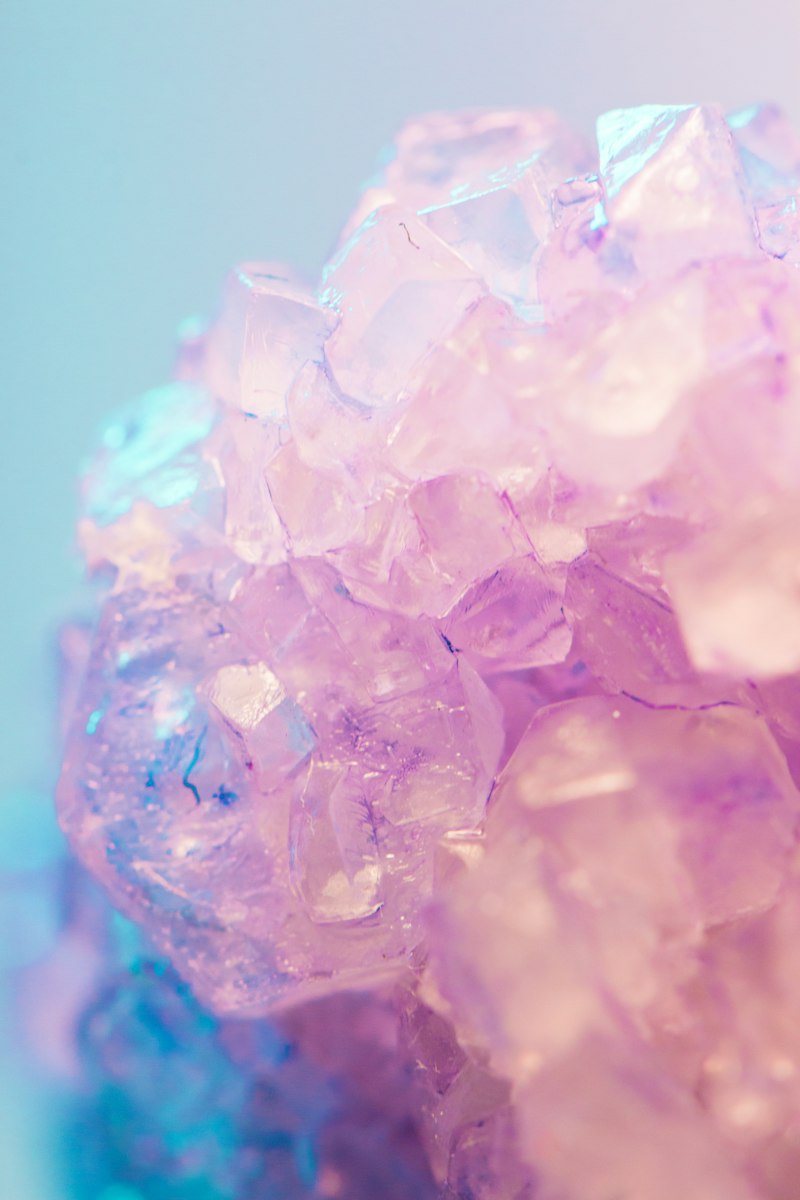Gemstone Art of Ancient Greece: Beliefs in Sculptures and Ornaments
Have you ever wondered about the captivating gemstone art of ancient Greece? The Greeks were not only known for their remarkable architectural achievements but also for their exquisite craftsmanship in creating sculptures and ornaments using gemstones. In this article, we will delve into the beliefs surrounding these stunning creations and explore the significance they held in Greek culture.
Gemstones, with their vibrant colors and mesmerizing patterns, were highly valued by the ancient Greeks. They believed that each gem possessed unique properties and powers that could influence various aspects of life. These beliefs were deeply rooted in their mythology and religion. For instance, the Greeks associated amethyst with Bacchus, the god of wine, believing it would prevent intoxication. Similarly, they believed that wearing topaz could enhance strength and bring about wisdom.
Sculptures adorned with gemstones played a crucial role in religious rituals and ceremonies. The Greeks believed that these precious stones could channel divine energies and connect mortals with the gods. Statues made of marble or bronze were meticulously embellished with gemstones like emeralds, rubies, and sapphires, adding an ethereal quality to the artwork. These sculptures were placed in temples and sanctuaries, serving as a means for worshippers to communicate with their deities.
Gemstone ornaments, such as necklaces, bracelets, and rings, were also popular among the ancient Greeks. These intricate pieces showcased the skill and creativity of Greek artisans. Gemstones like garnets, pearls, and turquoise were often used to create stunning jewelry that reflected the wearer’s social status and personal taste. Moreover, these ornaments were believed to have protective qualities and bring good fortune to the wearer.
The gemstone art of ancient Greece continues to inspire and awe us today. Its rich symbolism and connection to mythology offer a glimpse into the spiritual beliefs and cultural practices of the time. Whether it be the alluring sculptures or the intricately crafted ornaments, these creations showcase the extraordinary talent and imagination of Greek artisans.
the gemstone art of ancient Greece holds a special place in the history of artistic expression. It served as a medium for religious devotion, personal adornment, and the preservation of cultural beliefs. The intricate details and spiritual significance attached to these gemstone sculptures and ornaments continue to fascinate people around the world, reminding us of the enduring allure and timeless beauty of Greek civilization.
Uncovering the Mysteries: Ancient Greek Gemstone Art Reveals Intricate Beliefs and Symbolism
Have you ever wondered about the captivating world of ancient Greek gemstone art? These exquisite artifacts hold within them a wealth of intricate beliefs and symbolism, offering us a glimpse into the captivating minds of ancient civilizations. From sparkling amulets to intricate engravings, every piece tells a unique story that has survived the test of time.
In ancient Greece, gemstones held profound significance and were believed to possess magical powers. The Greeks adorned themselves with these precious gems, not merely for their aesthetic appeal but also as a means of protection and to connect with the divine. They believed that gemstones had the ability to ward off evil spirits, bring good fortune, and even cure ailments.
One of the most fascinating aspects of ancient Greek gemstone art is the symbolic representations found in their designs. Each gemstone was chosen carefully to reflect specific qualities or gods associated with it. For instance, the deep blue lapis lazuli symbolized the divine connection with the heavens, while the radiant red ruby represented passion and love.
The craftsmanship exhibited in these ancient artworks is truly awe-inspiring. Skilled artisans meticulously carved intricate patterns and detailed scenes onto the gemstones, often using techniques such as intaglio or relief carving. These miniature masterpieces depicted mythical creatures, gods, goddesses, and scenes from ancient Greek mythology, capturing the imagination of those who beheld them.
Beyond their beauty, these gemstone art creations served various purposes. They were treasured as talismans, protective amulets, and status symbols. Some gemstones were even used as seals to authenticate official documents, showcasing the practical versatility of these remarkable artifacts.
Today, the study of ancient Greek gemstone art continues to enthrall researchers and historians alike. Through careful examination of these relics, we gain invaluable insights into the beliefs, values, and aspirations of ancient Greek society. These gemstones are not merely precious stones but windows into a rich cultural heritage that continues to shape our understanding of the past.
the world of ancient Greek gemstone art is a mesmerizing realm filled with secrets waiting to be unraveled. These extraordinary artifacts provide a bridge between the present and the distant past, offering us a glimpse into the intricate beliefs and symbolism cherished by the ancient Greeks. Let us marvel at their craftsmanship, immerse ourselves in their captivating stories, and continue to uncover the mysteries they hold.
Gemstone Marvels of Ancient Greece: How Sculptures and Ornaments Captivated Gods and Mortals Alike
Step into the enchanting world of Ancient Greece, where gemstone marvels adorned the lives of gods and mortals alike. From intricate sculptures to exquisite ornaments, these precious stones held immense significance and captivated all who beheld them.
Imagine standing before a magnificent statue, its ethereal beauty emanating from every carefully carved curve. Ancient Greek sculptors, renowned for their craftsmanship, breathed life into stone through their skillful hands. But it was the addition of gemstones that truly elevated these works of art to celestial realms. The Greeks believed that gemstones possessed divine qualities and infused them with symbolism and power.
One such gemstone that mesmerized both gods and mortals was the amethyst. Its deep purple hue symbolized sobriety and protection against intoxication. Ancient Greeks often embellished their wine goblets with amethysts, believing that the gem would prevent drunkenness. These stunning vessels became symbols of luxury and refinement, sought after by those who wished to partake in the pleasures of life while maintaining control.
Another gemstone that held great allure was the lustrous emerald. Revered as the gem of immortality, emeralds were associated with the goddess Venus and her eternal beauty. Craftsmen adorned jewelry, crowns, and garments with these verdant treasures, bestowing the wearer with an air of divine grace and rejuvenation.

Let us not forget the fiery ruby, a gemstone synonymous with passion and vitality. Ancient Greeks believed that rubies held the power to ignite desires and kindle love. They adorned their most cherished possessions, such as rings and amulets, with these crimson gems, believing they would bring forth intense emotions and everlasting love.

From Gods to Mortals: The Divine Connection Explored in Ancient Greek Gemstone Art
From the depths of time, Ancient Greek gemstone art emerges as a captivating testament to the intricate relationship between gods and mortals. With its ethereal beauty and divine symbolism, this art form transports us to an era where mythology and human existence intertwined seamlessly. Let us embark on a journey to explore the mesmerizing tales embedded within these precious gems.
Imagine holding a gemstone adorned with delicate carvings that depict the mighty Zeus hurling his lightning bolt or Aphrodite, the goddess of love and beauty, emerging from the sea foam. These gemstones served as conduits for the divine, embodying the essence of the gods themselves. They were not mere adornments but embodiments of power, protection, and guidance.
Intricately carved gemstones, such as amethysts, carnelians, and chalcedonies, became vessels through which mortals could connect with the divine realm. These miniature masterpieces provided a tangible link to the gods, granting mortals a glimpse into their omnipotent world. By wearing or carrying these precious gems, individuals sought favor, protection, and guidance from their deities.
But how did ancient artisans capture such astonishing details on such small canvases? Like master storytellers, they employed their skills to intricately etch these stories onto the surface of each gem. Through careful craftsmanship, they brought forth mythical creatures, heroic battles, and immortal beings to life. These gems were not only artistic expressions but also gateways to another dimension.
Just as the gods influenced mortal lives, gemstone art held great significance in ancient Greek society. These exquisite pieces were bestowed upon heroes and dignitaries as marks of honor and prestige. They were treasured possessions, passed down through generations, safeguarding family legacies and ensuring divine blessings.

Ancient Greek gemstone art stands as a testament to the profound connection between gods and mortals. Through masterful craftsmanship, these gems became vessels of divine power and wisdom. Today, they offer us a glimpse into the mythical realm, where gods and heroes walked among us, leaving an indelible mark on history. Let us cherish these enchanting artworks as windows to the past and gateways to the divine.
Beyond Beauty: Unveiling the Spiritual Significance of Gemstone Art in Ancient Greece
In ancient Greece, gemstone art went beyond its physical beauty; it held a profound spiritual significance. These mesmerizing gems were not just decorative adornments but objects that connected individuals to the divine realm. The intricate craftsmanship and symbolism embedded in gemstone art captivated the hearts and minds of the ancient Greeks, leaving a lasting impact on their culture and beliefs.
Gemstones such as amethyst, lapis lazuli, and garnet were highly valued for their vibrant colors and mystical properties. Each stone was believed to possess unique powers and associations with various gods and goddesses. For instance, amethyst was associated with Dionysus, the god of wine and revelry, while lapis lazuli was linked to Zeus, the king of the gods. These associations elevated the status of gemstones from mere decorative items to sacred objects imbued with spiritual energy.
The use of gemstones in jewelry and artifacts was not limited to personal adornment. They were also incorporated into religious rituals and ceremonies. Priests and priestesses wore gemstone-encrusted amulets and pendants to channel divine energies and invoke blessings. Gemstone art adorned temples, depicting mythological narratives and serving as conduits between mortals and deities.
The craftsmanship involved in creating gemstone art was awe-inspiring. Skilled artisans meticulously carved and polished gemstones, transforming them into intricate masterpieces. These works of art showcased the talent and dedication of the craftsmen, and their creations were treasured for generations.
Metaphorically speaking, gemstone art was like a window into the spiritual world. It provided a glimpse of the divine and allowed individuals to connect with higher realms. Just as a gemstone reflects light, these artworks reflected the devotion and reverence of the ancient Greeks towards their gods.
gemstone art in ancient Greece went far beyond its aesthetic appeal. It carried deep spiritual significance, acting as a bridge between mortals and the divine. The intricate craftsmanship, symbolic associations, and use in religious rituals elevated gemstone art to a sacred level. These artifacts continue to mesmerize us today, reminding us of the profound impact they had on ancient Greek culture and spirituality.


